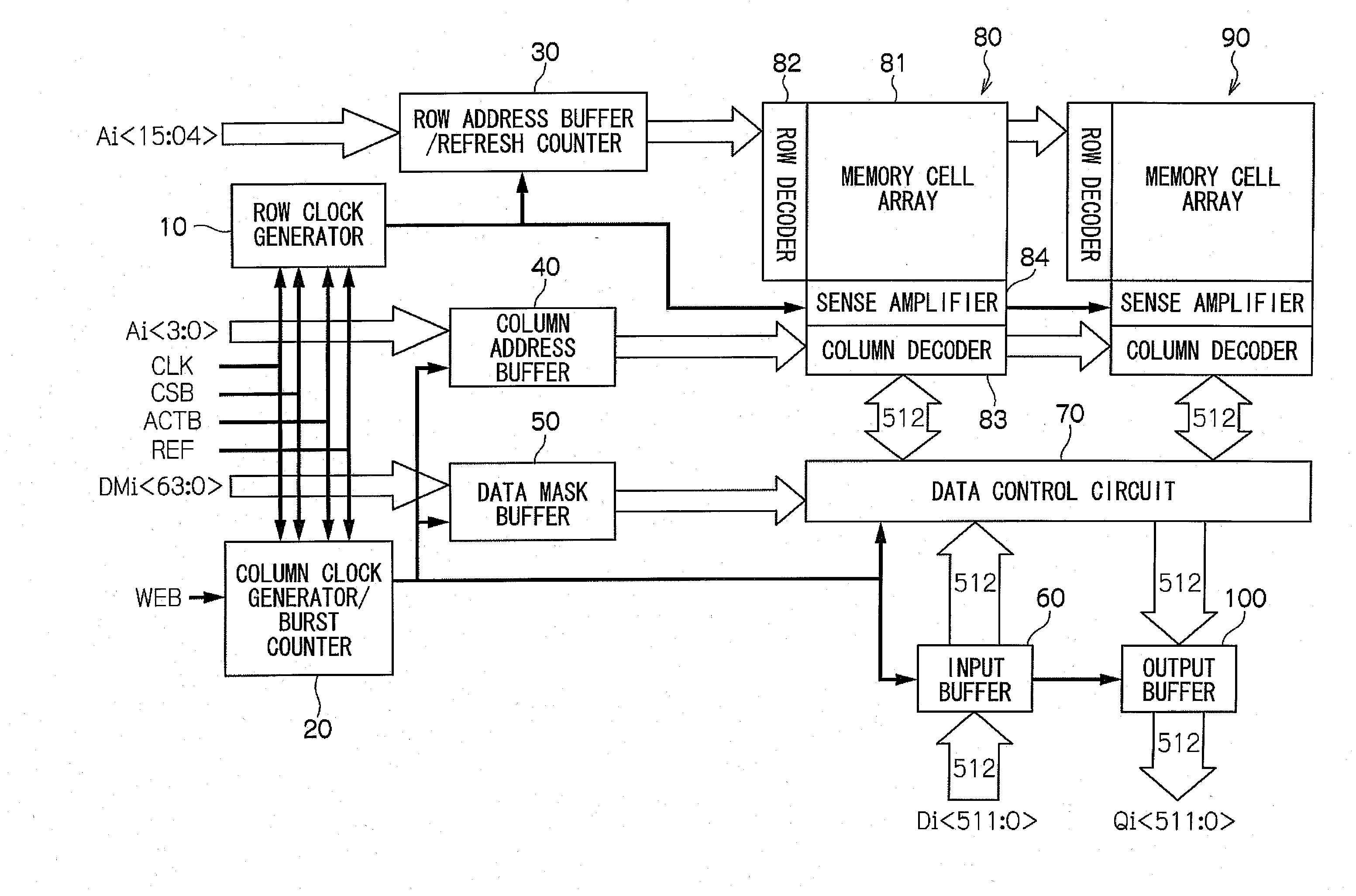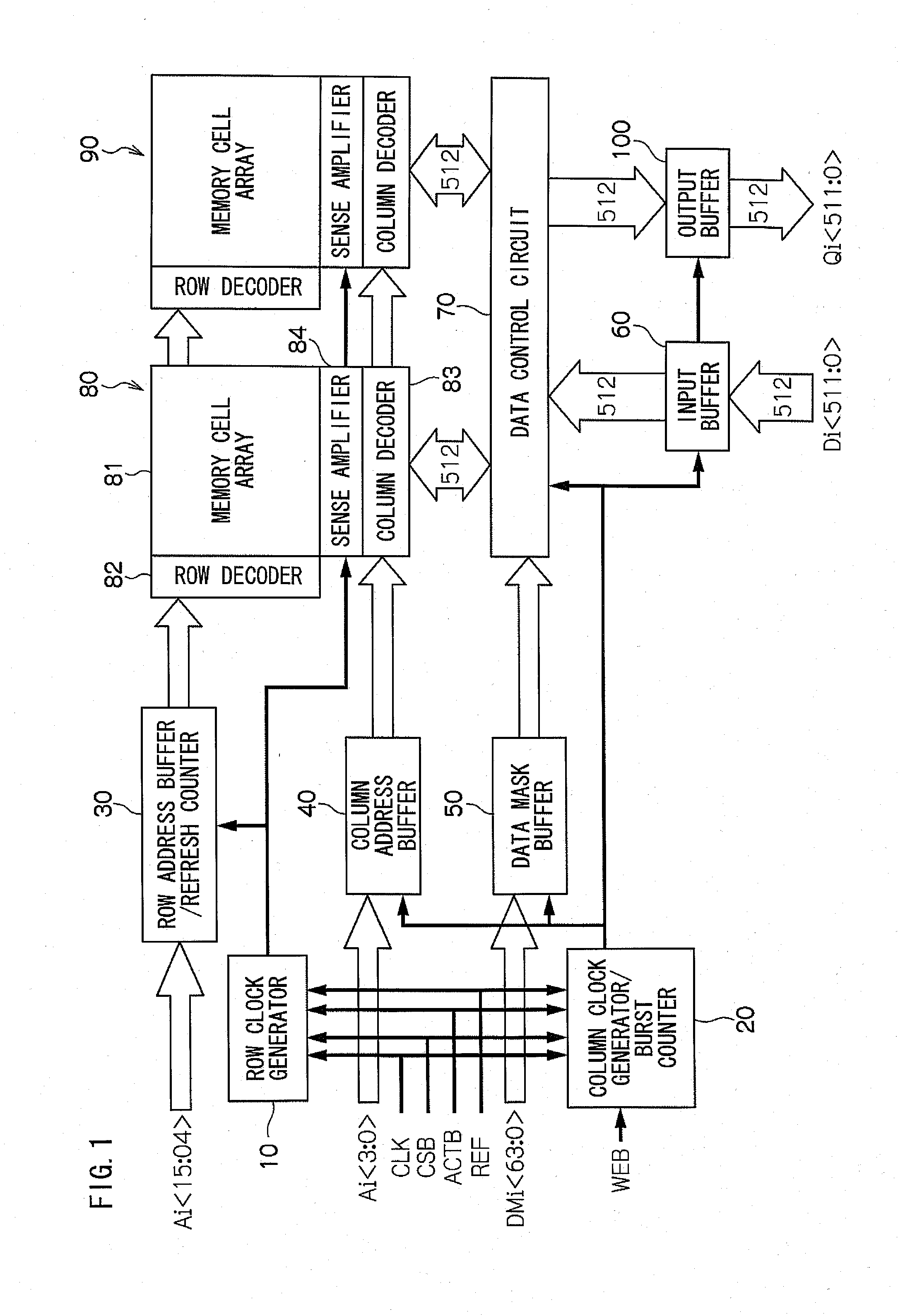Semiconductor memory device
- Summary
- Abstract
- Description
- Claims
- Application Information
AI Technical Summary
Benefits of technology
Problems solved by technology
Method used
Image
Examples
first embodiment
[0024]FIG. 1 is a view showing the configuration of the semiconductor memory device in which the present invention is implemented. The semiconductor memory device comprises the row clock generator 10 which generates the row clock, the column clock generator / burst counter 20 which generates the column clock or counts the burst, the row address buffer / refresh counter 30 which temporarily stores the 12-bit row address Ai or counts the number of refreshes, the column address buffer 40 which temporarily stores the 4-bit column address Ai, and the data mask buffer 50 which temporarily stores the data mask.
[0025]Also, the above-mentioned semiconductor memory device comprises the input buffer 60 which temporarily stores the data which is input from outside in a set of 512-bit signals, data control circuit 70 which outputs the data supplied by the input buffer 60, dividing it into two parallel data of a set of 512-bit signals each, or converting such two parallel data of a set of 512-bit sig...
second embodiment
[0060]Next is an explanation of the second embodiment of the present invention. Where there are common portions with the first embodiment, it is explained as such and details are omitted. In the first embodiment, the memory device has two memory banks. In the second embodiment, the memory device has four memory banks.
[0061]FIG. 5 is a view showing the configuration of the semiconductor memory device in which the present invention is implemented as the “second embodiment”. This semiconductor memory device has the third memory bank 180 and the fourth memory bank 190 in addition to the configuration shown in FIG. 1, and in stead of the data control circuit 70 shown in FIG. 1, it has the data control circuit 170. The third and the fourth memory banks 180 and 190 are configured in the same way as shown in FIG. 3.
[0062]FIG. 6 is a block diagram showing the configuration of the data control circuit 170. The data control circuit 170 comprises the input controller 171 which converts serial d...
PUM
 Login to View More
Login to View More Abstract
Description
Claims
Application Information
 Login to View More
Login to View More - R&D
- Intellectual Property
- Life Sciences
- Materials
- Tech Scout
- Unparalleled Data Quality
- Higher Quality Content
- 60% Fewer Hallucinations
Browse by: Latest US Patents, China's latest patents, Technical Efficacy Thesaurus, Application Domain, Technology Topic, Popular Technical Reports.
© 2025 PatSnap. All rights reserved.Legal|Privacy policy|Modern Slavery Act Transparency Statement|Sitemap|About US| Contact US: help@patsnap.com



